The iFi Power Station is, as its name may well suggest to many, a mains purifier and  distribution block. It costs £499. Janine Elliot plumbs it into her system.
distribution block. It costs £499. Janine Elliot plumbs it into her system.
 Continuing my exploration of cute iFi DC operated DACs and digital and analogue products I was taken aback to be given a weighty box with a large six-way mains cleaner inside. But there again, I needn’t have been so shocked since the company have been producing mains taming devices since 2016. Their first power related product was the iPower upgrading wall-wart switch mode mains adapter followed by the AC iPurifier in 2017 and the DC iPurifer2 arriving in 2018. The PowerStation, up for review here, was launched in 2019, incorporating iFi’s ANC II tech into a whole-system mains block for the first time. The very latest iFi clean-power product is the just-launched iPower X, a higher-spec alternative to the iPower power supply. With the mains Aurora and the Retro Stereo 50 requiring mains, plus a number of smaller iFi products working with mains adaptors such as the excellent Zen range, the desire to produce a mains purifying solution is a good move.
Continuing my exploration of cute iFi DC operated DACs and digital and analogue products I was taken aback to be given a weighty box with a large six-way mains cleaner inside. But there again, I needn’t have been so shocked since the company have been producing mains taming devices since 2016. Their first power related product was the iPower upgrading wall-wart switch mode mains adapter followed by the AC iPurifier in 2017 and the DC iPurifer2 arriving in 2018. The PowerStation, up for review here, was launched in 2019, incorporating iFi’s ANC II tech into a whole-system mains block for the first time. The very latest iFi clean-power product is the just-launched iPower X, a higher-spec alternative to the iPower power supply. With the mains Aurora and the Retro Stereo 50 requiring mains, plus a number of smaller iFi products working with mains adaptors such as the excellent Zen range, the desire to produce a mains purifying solution is a good move.
This is a British company with the expertise at their Southport head office and manufacture at their own China workshop. It all began in 2012, an offshoot from the high-end manufacturer AMR (Abbingdon Music Research) with both companies designing and manufacturing portable, desktop and hi-end HiFi components. iFi is certainly a name that is getting banded about the HiFi press with excellent reviews every time. I should be in very good hands here, then. I also need to be honest, though, having had a love/hate relationship with mains conditioners and mains taming apparatus over the years, having built my own conditioners, advised a few companies, and owning a number, but this Power Station is completely different to anything I have yet got my hands on, not least in looks and adaptability.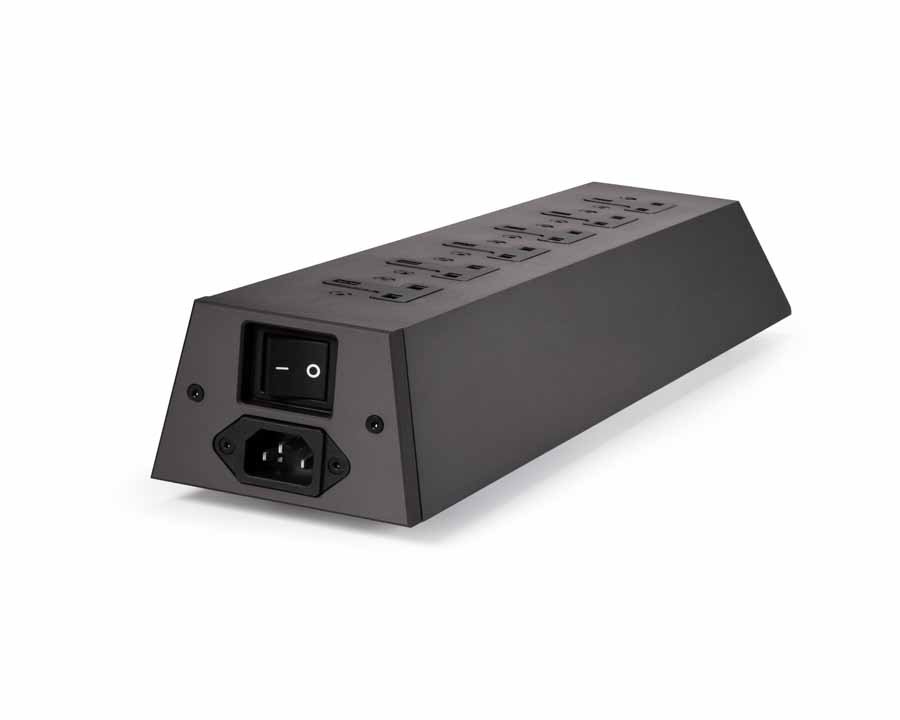
Some mains purifiers particularly passive units can have side effects such as curving of initial transients and affecting timing and dynamics. Where passive mains conditioners generally only work at the higher frequency range reducing noise from wi-fi/phone/radio transmissions (MHz – GHz), the active PowerStation mains audio noise eliminator works significantly better in the lower frequency bandwidth from 10kHz and is quoted as giving greater than 40dB noise reduction at 1MHz. Whilst passive mains conditioners, working at the very high frequencies, can reduce noise by a higher degree (~70dB), they “change” the sound especially transients, and don’t work at the important lower frequencies. Whilst your mains might be 50Hz there are a lot of other frequencies, “distortion”, coming along your mains leads that need to be removed. Not only does noise get into the system from AC and switch-mode power supplies, and digital circuitry, but it is all around us whether emanating from AM, FM, TV or wi-fi. It just interferes with all our audio and video. It is very important, therefore, that as well as good mains cables you choose the best filter that removes all the interference but maintains the original 50Hz or 60Hz signal as pure as it was leaving the power station. Whilst a balanced mains unit is another approach to having pure mains, they are rather expensive unless you build them yourself. The PowerStation comes in at £499 which is considerably cheaper considering all that it does on the quiet.
CONSTRUCTION
This is a 6-way unit for 13A sockets (though also comes in AU, EU and US versions, of which the US version is 8-way since the sockets are smaller). With an IEC socket at one end with an off/on switch, the matt finish grey block has an iPurifier at the other where most of the work is done. The iPurifier has polarity and earth indications (more on this later) and a 4mm earthing socket for banana connectors. The unit looks very stylish, though the matt gunmetal finish may tarnish over time if you are using dirty fingers. The lines and edges are ruler sharp giving it a very special appearance (especially the “wedge shape” at one end) and has a solid build quality. It operates to 2.5kW 10A, with surge protection up to 30kA@ 1,000V/10ųS which is also impressive.
iFi is very good coming up with names for their devices and techniques, with a penchant for adding i’s and joining words together. In the Power Station, I mean PowerStation, we have PurCopper Bus-Bars and PurCopper outlets, Active Noise Cancellation2 technology, and most importantly the AC iPurifier.
Let’s begin by taking the unit verbally apart to explore all that is going on inside. Each of the six mains outlets is independently isolated in its own chamber to prevent cross-contamination, with the addition of strategically placed EVA (Ethylene Vinyl Acetate) to damp vibrations. It is excellently put together with solid pure (99.9999% pure OFHC – Oxygen-Free High-Conductivity) copper cores, the solid PurCopper bus-bars running along the mains block connecting to each of the socket terminals via very short wire connections. Each socket also has a capacitor between the Live and Neutral connections to eradicate the higher frequencies just as in a basic passive conditioner. These components will only reduce wireless transmission infiltration in the megahertz, things like FM, mobile phone and wi-fi. RFI (Radio Frequency Interference) covers a large range and any reduction in this area will be well received. However, there is also much interference in the kilohertz range that is needed to be removed to get that pure mains signal into your mains HiFi or switch mode power supply. The iPurifier will be responsible for this and is the white cylinder that sits at one end of the mains board fed from the IEC socket at the other, using heavy OFHC Continuous Cast Copper internal wiring with multi-layered polymer insulation. This is where the active cleaning takes place. Additional iPurifier’s can be purchased for £99, which can be added to the mains board or plugged precariously around the house next to important audio or video plugs. Using the principle used in noise-cancelling headphones, with Active Noise Cancellation2 technology any noise faces an ‘equal’ and ‘opposite’ noise to end up with “clean power”. This is the same end goal as balanced mains units; In the case of balanced mains units it is achieved by splitting the 230V voltage into two separate 115V supplies with one on the live and the other on the neutral, and because each is a different polarity the noise on one is cancelled by the noise on the other. In the PowerStation it detects the “noise” and recreates a reverse sample to eliminate it, all done on a very small PCB, rather than large and heavy toroidal cores in the case of a balanced mains unit. Finally, the Wireless Purification System (WPS) circuit reduces power line noise “without audible or measured side-effects”. In total, with both active and passive noise reduction from 10KHz into the megahertz the PowerStation should reduce interference from every corner of your property.
As well as active noise reduction the AC iPurifier has other functions. The polarity and earth diagnostic system combine inbuilt earth/ground and polarity detection. The grounding system ensures the AC iPurifier will not introduce a ground loop when one isn’t needed. This means that there should be less hum in the system. As mentioned, additional AC iPurifiers can be purchased to lessen contamination even further along the 6-way block. For example, if you have your analogue amplification on the first two sockets you can insert a purifier and separate the other remaining 3 sockets for your digital “sources”, the iPurifier acting as a noise shield. Noise is reduced, isolated and confined to each section. At the end of the AC iPurifier are two LEDs; a red or green polarity and earth indication. This means that green is good and red signifies an issue. You can check the polarity is correct and that you have the necessary ground/earth connection. If both are green all is well, but if both are red then there is a ground issue and earth is missing or faulty (for example the resistance is far too high). Luckily my system was fine, showing green for both. Just wish there was also an LED display telling me how many volts were coming in. Finally, there is a 4mm socket for adding an additional earth to your HiFi, for example, a turntable. iFi refers to this circuitry as “Intelligent Ground” because it will not create a ground loop, a common cause of buzz or hum, even if the system is already earthed.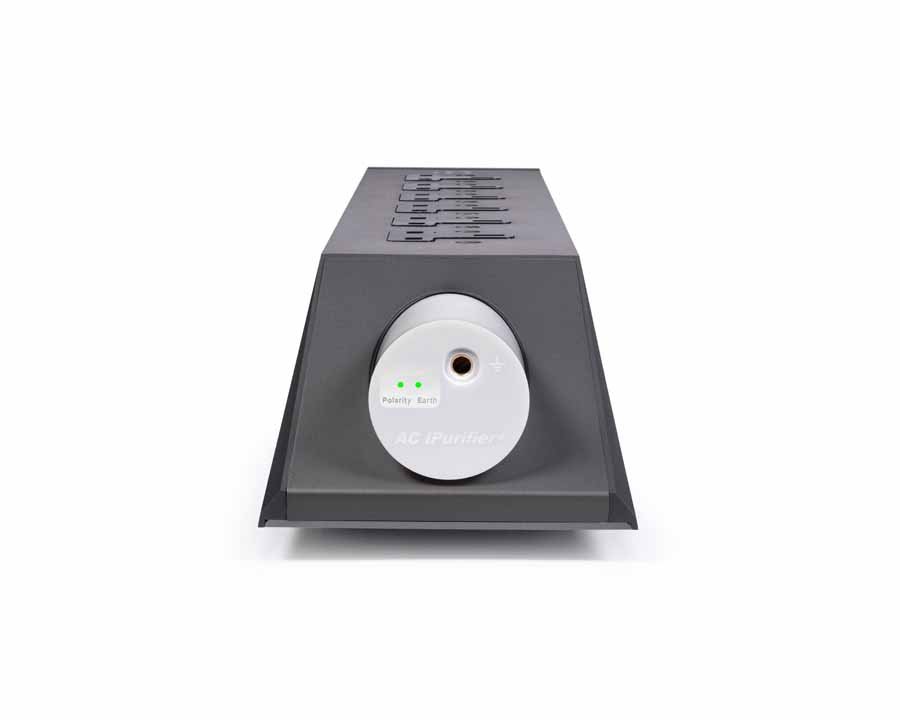
THE MUSIC
I have four HiFi setups at my disposal at Chez Janine, so decided to operate most of the reviewing using the third system in my bedroom. There were several reasons for this. Firstly, this is not on my dedicated HiFi mains run. Secondly, the room is in the middle of being rearranged; at the moment it goes against my own knowledge of setting things up, and common sense, as there are very long cable runs and daisy-chaining of mains blocks. Highly dangerous and prone to noise interference so ideal for testing the PowerStation. I hasten to add that after reviewing, my room was set up in a much more agreeable manner. Thirdly, this system uses a lot of mains adaptors. This room was therefore the ideal starting point for the review. This is a very able system and gives excellent sound at the best of times; Slee Proprius mono-blocks and Majestic pre/DAC, Fiio DAP, Mitchell/SME turntable, and Chartwell LS3/5a loudspeakers. This setup works well especially at the end of a very long day of coronavirus lockdown. To listen, I chose a variety of music that I know very well and have used in previous reviews, after all, this is not a record review.
Listening to mains conditioners and mains taming equipment of all sorts is not an easy task and one that many audio folk have fixed views ‘for’ or ‘against’. I use various manufacturer’s mains cleaning products around the house in order to get the best audio I can, but I only choose the right equipment, or not at all, after much evaluation. I, therefore, reviewed the PowerStation with an open mind. To start with I chose Oscar Peterson 12-bar title track from the 1962 album ‘Night Train’ (24bit/96kHz). I sometimes have problems with this album finding it somewhat unexciting. With the SoundStation I was instantly aware of a quieter system with extra details particularly from the percussion and an extended bass line; I was instantly awarded tighter transients, positional detail, and the ability to get more engrossed in what was happening in the music. For example, track 3 “Georgia on my Mind” had tighter instrumentation and increased width to the soundstage.
Patricia Barber ‘Live in Paris’ is one of my favourite double albums with plenty of bass and treble and an excellent soundstage. “Crash” was insanely good; the clarity and excitement, particularly in the piano and percussion, was proof for me that this trio of active AC iPurifier, an excellent mains block and passive mains conditioner worked so well. Having next removed all the filtration ended up with much more noise on the piano – like it was over-recorded and distorting.
Chasing the Dragon ‘Vivaldi in Venice’ is a lovely album to listen to especially at the end of the day with a glass of wine, and without the PowerStation, whilst the sound is “adequate” it didn’t get me that enthused. Reconnecting the PowerStation was a different matter. Tartini Violin Concerto in E minor D56, was clearer, not just a tightening of transients but also the soundstage both front and back; for example the harpsichord behind the strings. Similarly, the reverb in the hall improved with the iFi, all the detail after the notes were played given time to die off.
I set up my modified Leak Stereo20 for auditioning in the main listening room. This amp can be very susceptible to mains hums and “noise” especially when connected to my Pre-Audio tangential turntable. My own active/passive mains taming system works very effectively in giving me an excellent sound, so I really needed to remind myself of no mains conditioning at all before I started playing with the iFi. Goldfrapp ‘Seventh Tree’ is their fourth studio album, with my favourite being the one that started it all, ‘Felt Mountain’. ‘Seventh Tree’ loses some of the uniqueness from their first and that includes some of the excitement and sound quality, lacking in depth and top end, with lots of “intentional” distortion that doesn’t sound nice, especially the last track. Track 2, side 2 did give some good definition of the acoustic guitar on the right, but I could see why record sales only hit 200,000 as against a million at the height of their fame. The PowerStation added more depth to the music, with a bigger soundstage, space between the instruments, and a clearer vocal line. That distortion also sounded more acceptable.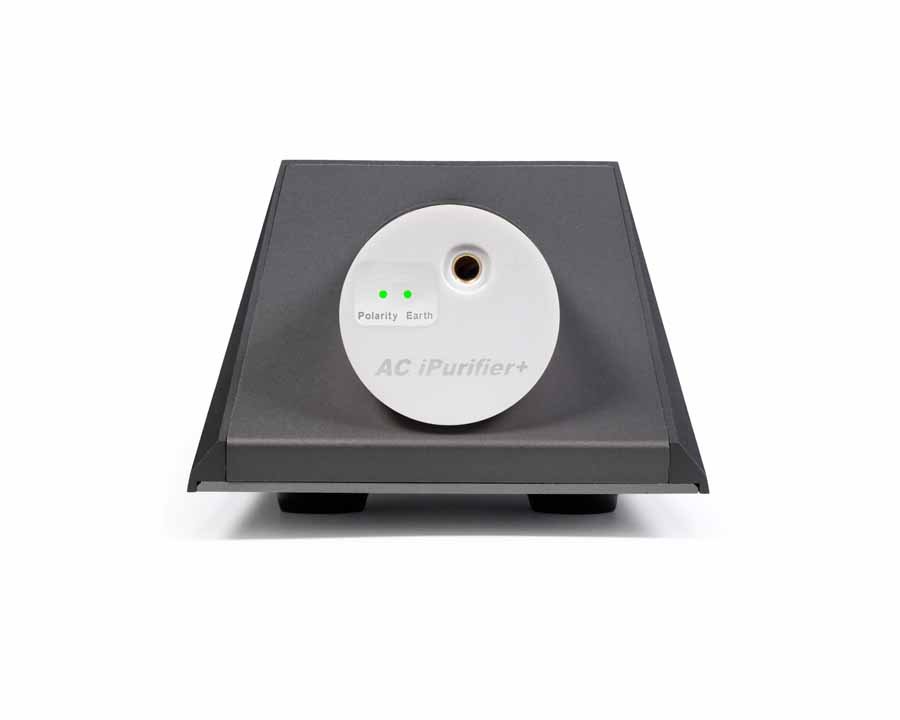
Listening to Patricia Barber’s ‘Live in France’ on this system provided clearer initial transients (surprising me on the rather slow Leak) and an openness to the sound revealing more of the music. For example, side D “White World” had a tightening of the percussion giving more definition and a slight improvement in the soundstage, and the distorted electro-acoustic guitar was much more precise; I wanted to hear all the distortion, in full 4K not 405-lines. The PowerStation enabled greater “texture” so I could hear all those particles of distorted sound.
To Respighi, “Pines of Rome” (Maazel conducting the Cleveland Orchestra). This is a great album to test not only the soundstage and timbres but also dynamics and picking out individual instruments. Some believe this to be one of the best recordings of the 70’s, period, and is one of my most treasured LPs. In performance, just as in the other tests, backgrounds were quieter, and imaging was improved. Respighi had a thing about Rome, composing three of his best works about the city. “Feste Romane” had lots of powerful initial brass transients brilliantly portrayed with what sounds like an American battle scene from the trumpets followed by an Eastern wilderness minor chordal section. Such a lot happens in the mind of Respighi, with colouristic orchestration showing the influence of Rimsky Korsakov with whom he studied. “Pines of Rome”, the best known of the trilogy, is no exception; a highly programmatic work of children playing in the first movement, Pines casting a shadow in the catacomb in the second, a nightingale singing in the third, and the last movement all about a consul’s army advancing toward along the road. In the latter movement, Respighi wanted the listener to feel the vibration of the troops marching in, so he employs an organ blasting away the very lowest Bb on the 8-foot, 16-foot and 32-foot organ pedals. My LS3/5a might have problems with that one but my LS5/9 with Wilson Benesch subsonic generator certainly didn’t. Bass seemed clearer and richer without being any louder – if you see what I mean. Whilst Respighi might have had lots of imagination, the PowerStation was just pure honesty. My Leak usually has a slightly prominent mid-range, but the combination gave purity and honesty to the sound. #
Finally, ‘Heartplay’ (Naim) with my favourite guitarist Antonio Forcione and Charlie Haden on double bass rounded off the review just perfectly with an extended bass end and tight top end from the guitar. The music was allowed to breathe with space for decays and reverbs.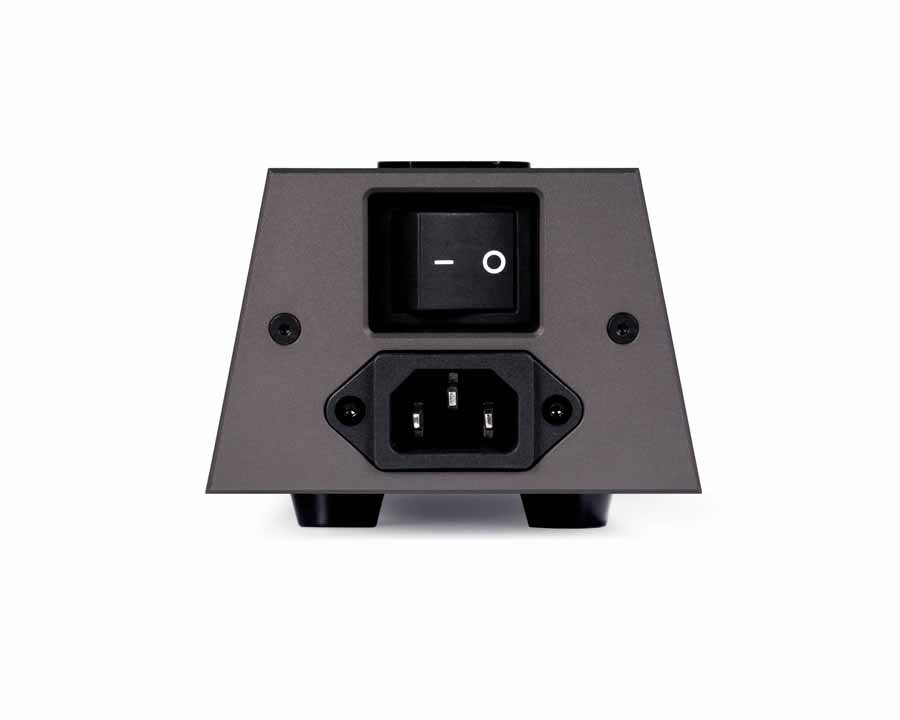
CONCLUSION
iFi produce some lovely kit, and the PowerStation is no exception. Normally ‘conditioners’ add to the sound; after all, they are basically a tone control. The PowerStation was different. It left me engaging in more of the music, with noticeably tighter bass, greater definition and dynamic control.
For £499 this is such good value, but if that is too much for you then you can buy the AC iPurifier at £99 and add to your existing mains block. Better still, buy both for even better mains.
AT A GLANCE
Build Quality: impeccable construction. Well-thought-out both inside and out.
Sound Quality: A tighter bass and greater depth to soundstage
Value for Money: £499 for an instant upgrade to your hi-fi is a no-brainer.
Pros:
Improvement to the bass
Greater dynamics and soundstage definition
No softening of the edges as often found in passive noise conditioners
£499 is excellent value for an active/passive combo.
Upgradeable with further iPurifiers.
Cons:
Some might not like the shape but that’s about it
Price: £499
Outstanding Product

Janine Elliot














































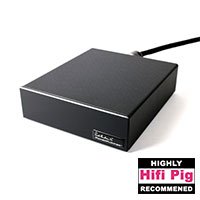









































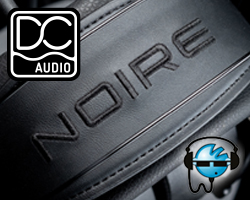























































































You must be logged in to leave a reply.